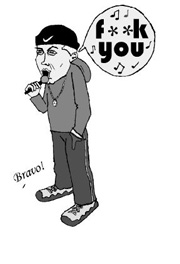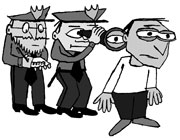FIRST-TIME SEATTLE AUTHOR Teri Hein is a child of the Palouse, and this memoir promises in its very title to be an examination of the plight of the Downwinders, those primarily rural residents living downwind of Hanford, particularly in the decade after World War II.
Atomic Farmgirl: The Betrayal of Chief Qualchan, the Appaloosa, and Me by Teri Hein (Fulcrum Publishing, $22.95)
To an extent, it is. Hein’s father survived a bout with cancer in that era, and there were others: “People were getting an odd feeling about our neighborhood by then. Dad had had thyroid cancer. Mona Zehm was dead from her brain tumor, David Brewer from leukemia, Barbara Martinson from lupus, and now Jimmy [Hahner] was sick. If we had had a bunch of farms between our farms, it wouldn’t have seemed so odd, but, in fact, we didn’t. We were one farm right next to another.”
This book is a testimonial to those people, and all citizens of Hangman’s Creek, a rural neighborhood near Fairfield in southern Spokane County. But it’s not a testimonial that examines Hanford’s 1950s plutonium releases—which Downwinders believe caused these and many more cancers—or the decades of lawsuits and cover-ups that followed. That’s left for another book. Instead, Hanford, and the Downwinder activism of Hein’s mother, are barely mentioned; the illnesses are simply part of the fabric of a rapidly disappearing lifestyle. Hein’s acknowledgements reveal that the book that became Atomic Farmgirl was inspired by a writing class, and her prologue states that she finally “found my story . . . the story of my neighborhood and the Palouse and of a landscape and the people who do and don’t belong there.”
By the latter, she is presumably referring to Hanford, but Hein never makes the case that Hanford is a deadly interloper. The death that is the real story of Atomic Farmgirl is the death of the farm, and of an isolated, community-oriented way of life. Hein, her three siblings, and many of her classmates have all left the farm for one or another city; farm prices have plummeted over the years and it’s harder than ever for someone to make a living from a small plot of land. Someone now leases and farms the land that had been in the Hein family since it was homesteaded in the 19th century.
THE STORY is told through the often moving and bittersweet experiences of the author, which didn’t include much of the outside world. We learn far less about Hanford, 100 miles away, than we do about Rockette, Hein’s girlhood horse. (The Chief Qualchan of the subtitle is not only an icon of local Native American history, but also the name of a neighbor’s horse.) The corporations contracting at Hanford, corporations that may have been responsible for the death of Hein’s neighbors, are named exactly once; by contrast, Fairfield’s annual Flag Day parade gets extensive treatment. We learn all about etiquette on party line telephones, when eight families (and their young girls) can all listen in to each others’ conversations. And so it goes, with chapter after chapter of incidents and anecdotes that in sum make up a generational history of a family and a neighborhood.
Despite the title, this is not a book about Hanford, but it is a book about a part of Washington and a time in Washington’s history with which few of us hip, 21st-century Seattleites are familiar. The story of the European immigrants who stole and then settled this land and of their descendants who continued to work it is aptly told through Hein; the period of time examined is essentially from when the author was a small girl until she went to college. At least for the next 100,000 or so years, we’ll have Hanford. We may not always have the rural Washington family farm, however, and Atomic Farmgirl‘s glimpse into that way of life is what makes it rewarding.







